| Date: 1944 Feb 10/10 | A/C Type: B-17G Fortress | SN: 42-37950 | Code: 7D + D (for Dinah) | A/C Nickname: Dinah Might | 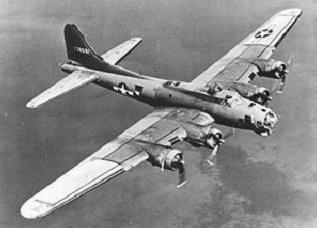 |
|||||
| File: 153 | Airforce: USAAF | Sqn/Unit: 452 BG - 731 BS | Mission/Raid: Brunswick (Braunschweig) | |||||||
| 1 | Pilot | 2Lt. Thomas F. Sharpless | 9 | RWG | Sgt. J.E. Herschel Shaw | |||||
| 2 | Co-pilot | 2Lt. Clyde V. Cassill WIA, bailed out, POW | 10 | TG | Sgt. Leslie C. Tiedman | |||||
| 3 | Nav. | 2Lt. John J. Lyons evd, POW in Belgium | 11 | |||||||
| 4 | B | 2Lt. August J. Fleischbein evd, POW Belgium | 12 | |||||||
| 5 | E | S/Sgt Lawrence S. Moses (WIA, 20mm frag in knee) | 13 | |||||||
| 6 | RO | S/Sgt. John W. Mosteller | 14 | |||||||
| 7 | BTG | Sgt. Freeman W. Fischer | 15 | |||||||
| 8 | LWG | Sgt. David Fineman | 16 | |||||||
Dropped out formation, damaged, near Dutch-German border on the return to England. Again attacked by fighters as straggler. Three men bailed out when there was still enough altitude east of the polder at Ossenzijl. Two could evade. The aircraft made a nearby belly landing in the Northeast Polder, NW of former Schokland Isle. Remaining seven crew were made POW not far from plane. |
||||||||||
The story on this aircraft and crew is incorrect published in dozens of articles and books. That is surprisingly, because pilot Tom Sharpless is very clear in the MACR: "Left formation on return about the German-Holland border. Co-pilot 2Lt. Clyde Cassill shot in the leg in the air, had to be helped from his seat for the bail-out". The help was given by the other officers in the front of the aircraft: nav. 2Lt. John Lyons and bombardier 2Lt. Fleischbein. These three bailed out together (at Ossenzijl). Engineer Sgt. Moses saw them use the nose escape hatch. Cassill jumped first and landed at Oldemarkt. Lt. Lyons bailed out 2nd and came down at Ossenzijl. Third was Gus Fleischbein, he landed at Kuinre (info PATS). Sharpless: "all officers except myself bailed-out. I stayed with the balance of the crew, the enlisted men, for the belly landing.
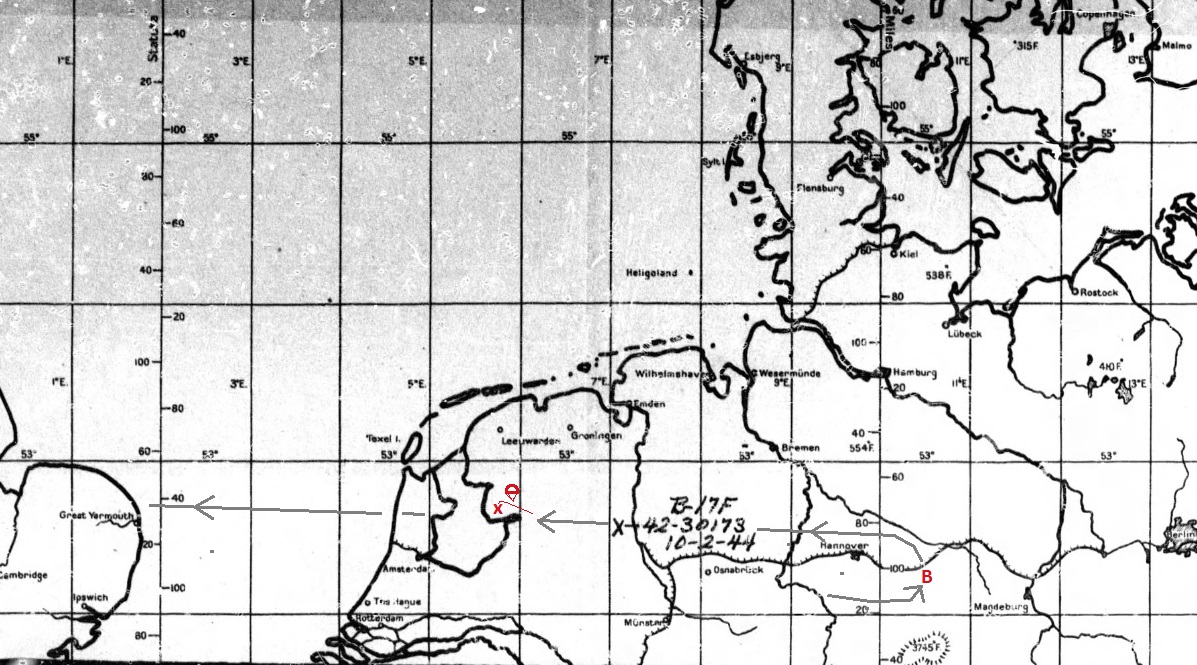
After his parachute jump, co-pilot Cassill had no chance to get away, a cannon round fired by a German fighter through the cockpit had shattered his lower leg at the shinbone (tibia). Became POW and his leg was put in cast. Eventually he was repatriated to the USA before wars end. Lyons and Fleischbein were helped by the resistance and hidden in safehouses. On the way south, August Fleischbein stayed in Erp with the Otten family. He got quite far, he was arrested in the Belgian Ardennes, in city of Namur (Namen) on July 2nd 1944. Lt. John Lyons was in other locations (Roermond), he also got arrested in Belgium, probably in Antwerp, Brussels or Liège. Both POW until April 1945.
Some of the crew wrongly believed they got down near the Dutch town Leeuwarden, but this was only because the name of this town was the nearest reference point on their map (above). In reality, Leeuwarden was 40 miles away. Pilot Sharpless knew very well he landed near the edge of Lake IJsselmeer (Old Zuyder Sea), in a polder, an area that was water two years before and still a mud-flat when he made the belly landing. Sharpless:

Eyewitness: "I took a walk outside prospector camp Zuidvaart (no. 25 on map), just south of Emmeloord. Snowy and wet weather. A big aircraft came in flying flow from the North and slided over the ground in a huge mud-fountain. The pilot stepped out and walked towards me. He pointed in his handbook the line "Can you help us getting civilian clothes?". Crew sprinkled fuel on the cockpit roof and radio room and set it on fire, but the dripping fire went out and only burned-off some green paint. "I helped a wounded crewman, who could not stand upright and we all stumbled towards my labour camp Zuidvaart (25), because the Germans could arrive soon at the plane. The man I helped, had a deep knee-wound (this was S/Sgt. Lawrence Moses who a had a 20mm fragment in his knee). In the distance shots rang of an automatic weapon. In the camp they said the resistance would arrive soon to take them further. I bandaged the wounded man's knee, a German soldier with a machinepistol rushed in".
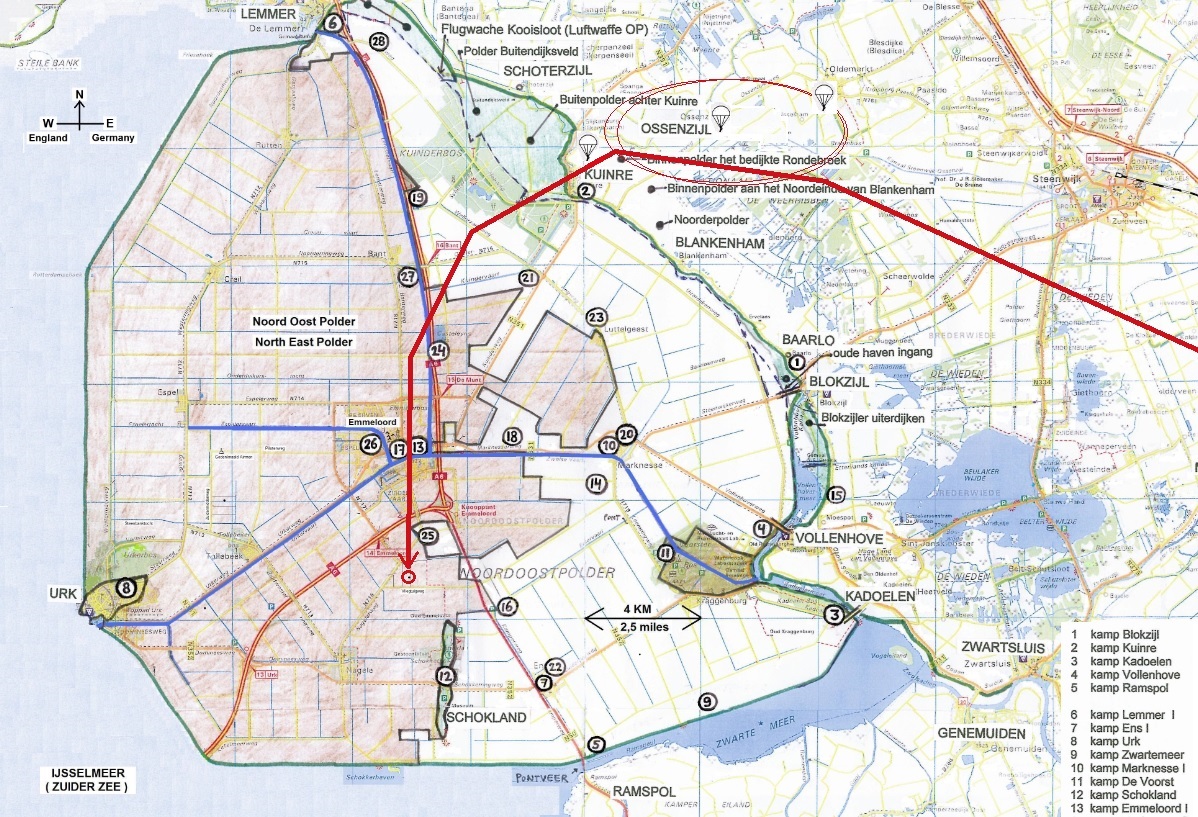
Below: After the crew was taken POW in camp Zuidvaart (Camp 25), Dutch polder workers (diggers, who's job it was to cultivate the former seabed on the west side of the polder), walked from Camp Zuidvaart towards the abandoned B-17. Because the aircraft could not be reached with vehicles, the Germans later only removed the .50 cal machineguns and left the aircraft as it was. On below photo, taken in the afternoon of the 10th, the armament is in place. The chin turret is dug-in in the clay. Paint-damage of the burning fuel (the crew's destruction attempt) is well visible on the flank, the burned green paint became orange. No. 1 engine (left) was not running during the landing. Co-pilot Cassill said propeller could not be feathered in the air because of damage inflicted by German fighters.
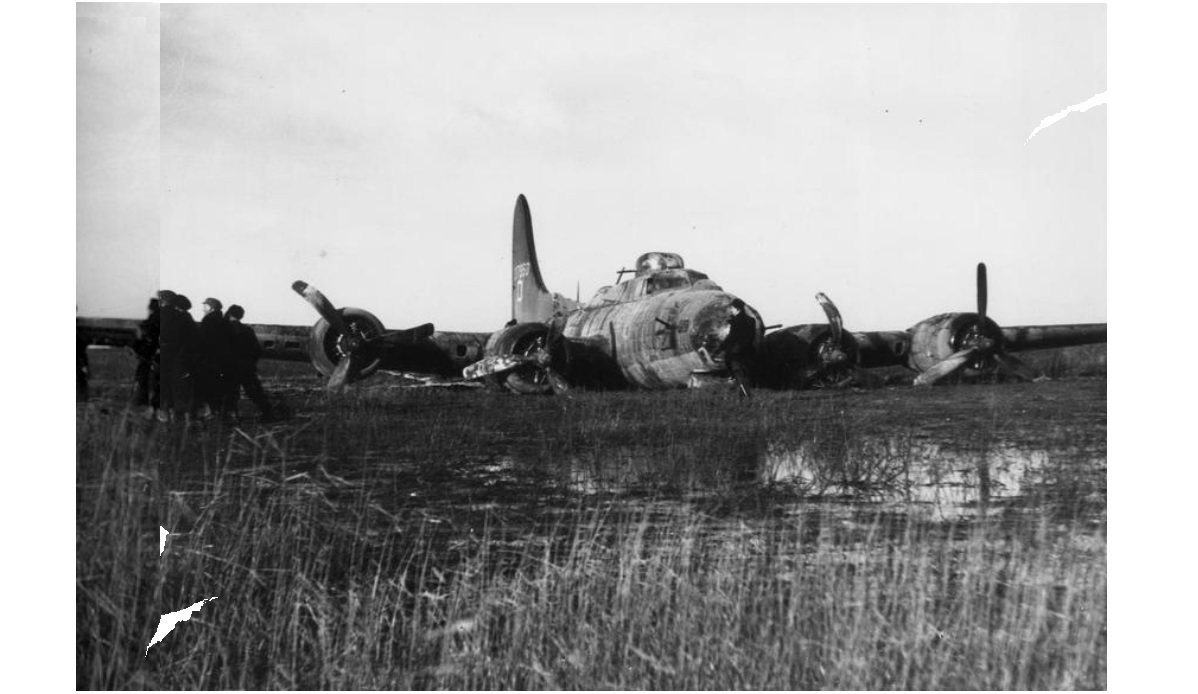
RAF reconnaissance photo later in 1944. Engines are still in place.
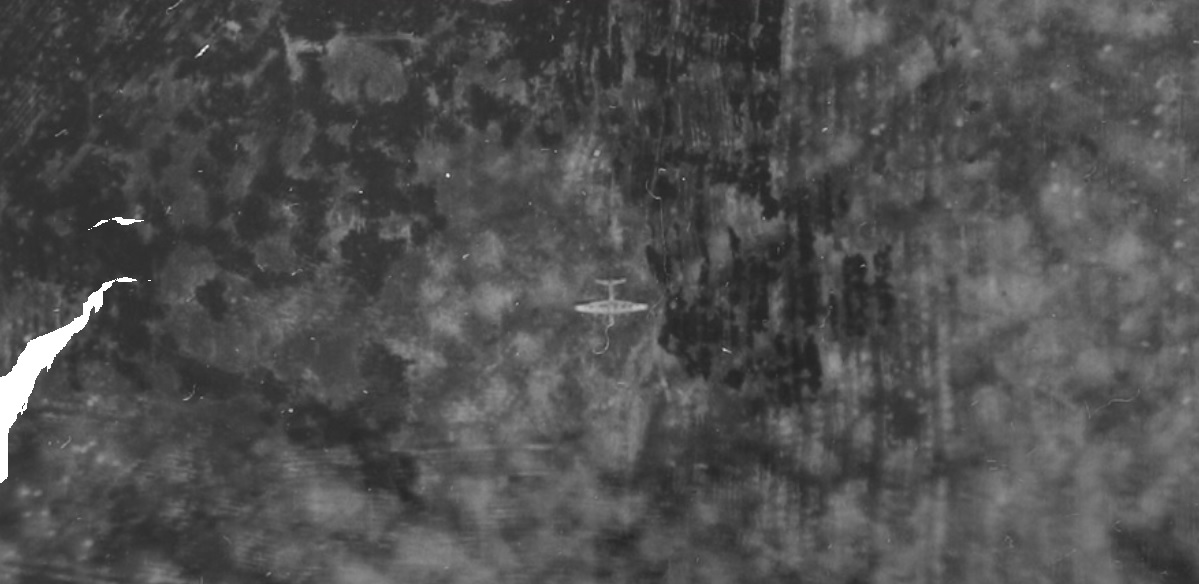
Below: RAF photo, post war 1947. Engines gone. Mud plain has been transformed to new agricultural land, ready for first implant. They carefully worked around the B-17.
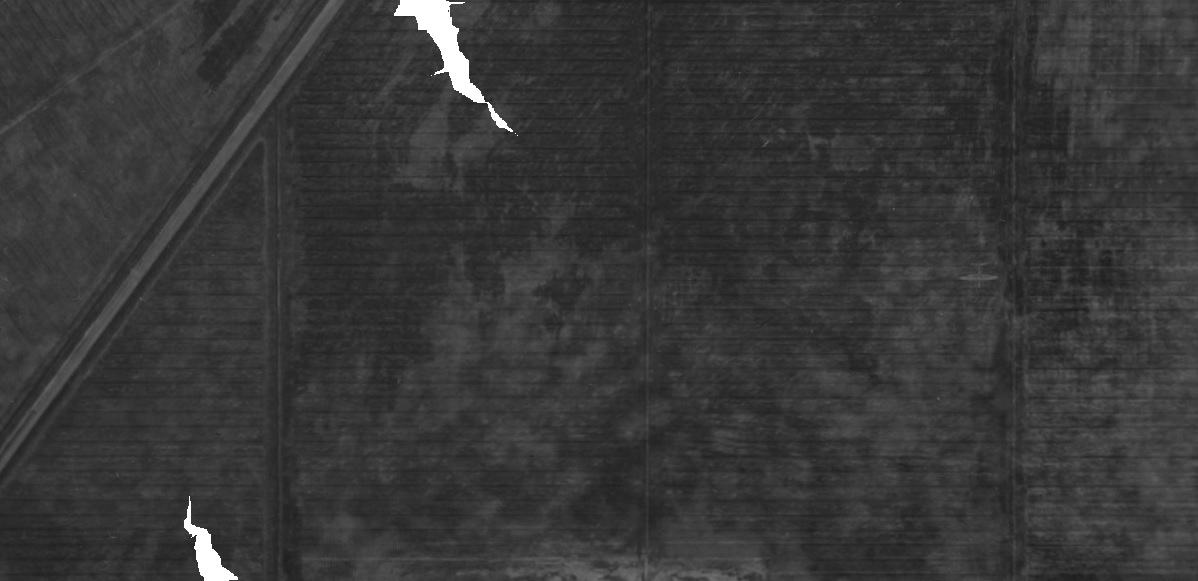
The aircraft lay for four years on its position (10 Feb. 1944 - Spring 1948). In 1948 it was demolished. During the four years it became a tourist attraction for German soldiers and the local farmers. Numerous pictures exist and keep turning up. The images show the gradual break-down of the wreck caused by souvenir hunters. One engine including propeller was smuggled out and was post war fixed to a factory wall. With fuel of Canadian liberators in May 1945, the engine run for a few minutes, but had to be shut-off because the wall cracked.

Sources/read more:
- MACR
- Website NOP (Dutch, good photos): http://www.nopinoorlogstijd.nl/neergekomen-vliegtuigen/10-feb-1944-b-17g-20-dl-42-37950/
NOP page 2: http://www.nopinoorlogstijd.nl/b-17-dinah-might/
- Website Teunis PATS (English, good info and photos). When on this site, allow 15 seconds to load. Then use Ctrl + F and enter 'Sharpless'.
. http://www.teunispats.nl/jack-edward-gibbs.htm
- TV interview with Radio Operator John W. Mosteller (then age 84), visiting the location
. http://www.omroepflevoland.nl/Nieuws/60071/nagele-vliegtuigweg-verwelkomt-naamgever
© ZZairwar (Zuyder Zee Air War)
.